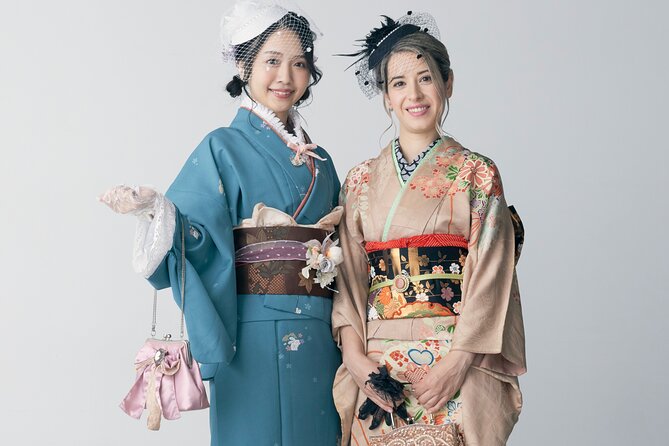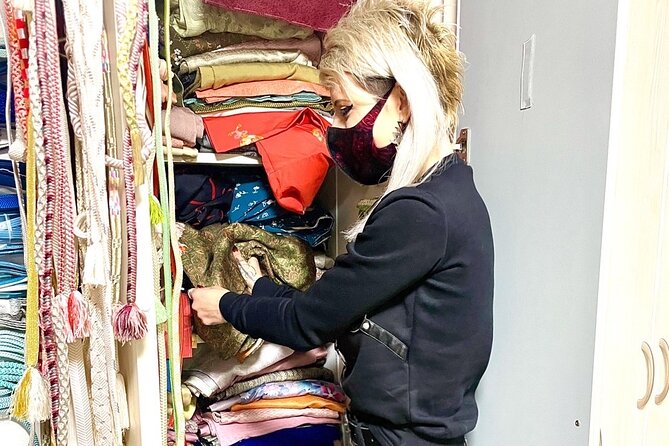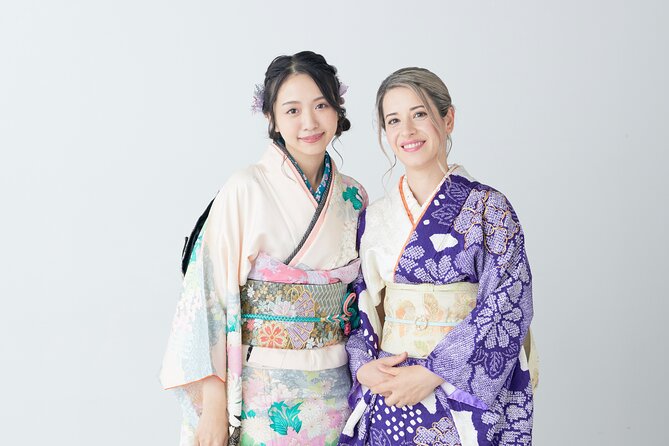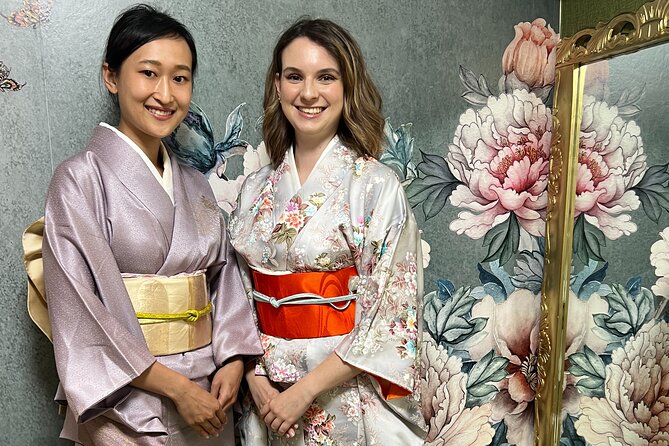Let’s Make a Kimono! (Kimono Is a Gift for You!)
With a rich cultural heritage spanning over a thousand years, the kimono is a timeless symbol of Japanese elegance, sophistication, and refinement. Each design tells a unique story of its own, representing cultural identity, social status, and artistic expression. From choosing the perfect fabric to adding embellishments and accents, creating a kimono is an art form that requires attention to detail and a deep understanding of its cultural significance. As they embark on this creative journey, they’ll uncover the secrets of this traditional garment and discover the beauty of a kimono, tailored to perfection, waiting to be unwrapped.
Just The Basics

• To create a unique kimono, choose a fabric that suits the occasion and personal style, considering factors like season, comfort, and durability.
• Take precise body measurements to ensure a custom fit, including length, waistline, bust, shoulder width, and sleeve length.
• Combine kimono patterns and motifs harmoniously, balancing bold and subtle elements to create visual interest and cultural significance.
• Use sewing and construction techniques like consistent seam allowance, pressing, and reinforcement to create a professional finish and durable garment.
• Add embellishments and accents thoughtfully, considering the kimono’s intended use, wearer’s style, and level of formality, to elevate its aesthetic appeal.
It's also worth checking out some other tours and experiences nearby.
Kimono History and Significance

The kimono, a traditional garment in Japanese culture, has a rich history that spans over a thousand years, with its significance extending beyond mere fashion to represent cultural identity, social status, and artistic expression.
This iconic garment has played a vital role in Japanese society, serving as a symbol of elegance, sophistication, and refinement.
Throughout history, kimonos have been worn for special occasions, ceremonies, and everyday life, with each design and pattern telling a story of its own.
From the intricate embroidery to the vibrant colors, every aspect of the kimono is imbued with meaning and significance, making it an integral part of Japan’s cultural heritage.
Choosing the Perfect Fabric

Selecting the perfect fabric is a crucial step in making a kimono, as it can significantly impact the garment’s overall appearance, comfort, and durability.
The right fabric choice can elevate the kimono’s aesthetic appeal, provide optimal comfort, and ensure it lasts for years to come.
When choosing a fabric, consider factors such as season, occasion, and personal preference.
Silk, cotton, and linen are popular choices, each offering unique benefits.
Silk provides a luxurious feel and elegant drape, while cotton is breathable and easy to care for.
Linen, on the other hand, is known for its natural texture and cooling properties.
Measuring for a Custom Fit
Measuring for a custom fit is crucial to ensure a kimono that not only looks stunning but also provides optimal comfort and mobility, and to achieve this, one must take precise body measurements.
To start, take note of the full length of the kimono, from the base of the neckline to the desired hem length.
Next, measure around the natural waistline, ensuring the tape measure is level and parallel to the floor.
The bust, shoulder width, and sleeve length should also be measured to ensure a precise fit.
Lastly, measure the armhole depth and the distance from the center back to the desired kimono length.
Understanding Kimono Patterns
With precise body measurements in hand, designers can now focus on understanding kimono patterns, a vital aspect of creating a stunning and authentic garment.
Kimono patterns are intricate and symbolic, telling stories of Japanese culture and history. To create an authentic kimono, designers must understand the significance of various patterns and motifs.
Nature-inspired patterns: Cherry blossoms, chrysanthemums, and peonies are popular motifs that represent the fleeting nature of life, longevity, and good fortune.
Geometric patterns: Cranes, waves, and chevrons are used to create a sense of movement and harmony.
Symbolic patterns: Dragon and phoenix motifs symbolize power, strength, and good luck.
Creating a Kimono Design
Designers can now bring their kimono vision to life by combining the chosen patterns and motifs in a harmonious and balanced way.
This involves carefully selecting colors, fabrics, and embellishments that complement each other.
A key consideration is the balance between bold and subtle elements to create visual interest.
Designers should also think about the kimono’s intended use and the wearer’s personal style.
For instance, a more subdued design might be suitable for formal occasions, while a bolder design could be perfect for casual events.
Sewing and Construction Tips
Crafting a beautiful kimono requires careful attention to sewing and construction techniques to bring the design to life. A well-made kimono isn’t only aesthetically pleasing but also comfortable and durable.
To achieve this, it’s essential to focus on the finer details of sewing and construction.
Some key tips to keep in mind include:
- Using a consistent seam allowance to ensure a professional finish
- Pressing seams as you go to reduce bulk and make the garment lie flat
- Reinforcing stress points, such as the shoulder seams, to prevent wear and tear
Adding Embellishments and Accents

Embellishments and accents can elevate a kimono from a simple garment to a stunning work of art, and thoughtfully selecting and applying these decorative elements is a critical step in the creation process.
The type and placement of embellishments can greatly impact the overall aesthetic of the kimono.
Traditional Japanese motifs, such as cherry blossoms or cranes, can add cultural significance and visual interest.
Beads, sequins, or metallic threads can add texture and shine.
When choosing embellishments, consider the kimono’s intended use, the wearer’s personal style, and the desired level of formality.
Wearing Your Kimono With Pride
With the kimono complete, the wearer can now confidently step out, exuding cultural pride and personal style.
The kimono isn’t just a garment, but a symbol of heritage and tradition. When worn with pride, it’s a celebration of cultural identity and self-expression.
Some ways to wear your kimono with pride include:
- Pairing it with modern accessories to create a fusion of traditional and contemporary style
- Adorning it with subtle yet meaningful embellishments that reflect the wearer’s personality
- Wearing it to cultural events or festivals to share the beauty of the kimono with others
Here's a few more nearby tours and experiences we think you'll like.
- 3 Hours Photography and Food Tour in Setagaya
- 1 Day Bus Tour To Mitsumine Shrine From Shinjuku
- Bunraku Performance In Kita-Senju Tokyo
- Tokyo Tour With Guided Interpreter Tokyo/Yokohama ⇒ Tokyo 8 Hours up to 18 People Private Bus Use
- Tokyo Narita Airport (NRT) to Hakone – Private Arrival Transfer
- 4-Days Private MT Fuji Tokyo Kamakura Nikko Hakone Yokohama Tour
Frequently Asked Questions
Can I Cancel or Change My Kimono-Making Tour Booking?
She cannot cancel or change her kimono-making tour booking as per the cancellation policy, which states that bookings are non-refundable and cannot be changed for any reason.
Are Service Animals Allowed in the Kimono-Making Workshop?
According to the tour details, service animals are allowed in the kimono-making workshop, ensuring accessibility for travelers with disabilities.
Is the Kimono-Making Activity Suitable for Travelers With Infants?
Infant seats are available, indicating that the activity is suitable for travelers with infants, allowing them to participate while caring for their little ones, making it a family-friendly experience.
What Is the Maximum Number of Participants in the Kimono-Making Tour?
She notes that the tour has a maximum capacity of three travelers, ensuring an intimate and personalized experience for participants, allowing for a more focused and engaging kimono-making activity.
Is a Refund Provided if I’m Not Satisfied With My Kimono Design?
According to Viator’s cancellation policy, no refunds will be provided if canceled for any reason, implying that dissatisfaction with the kimono design also won’t warrant a refund.
Not for you? Here's more of our most recent tour reviews happening neaby
- Shibuya Anime and Manga Tour With Ramen Lunch
- Shibuya Hidden Street Eats: Japanese BBQ, Fried Chicken, & More!
- Kitchenware Shopping and Cooking Experience in Kappabashi
- Private Shopping Tour From Tokyo to Mitsui Outlet Park Makuhari
- Samurai Experience (with Costume Wearing)
- Tokyo: Samurai Experience and Show
- Tsukiji Old and New – Fish Market Food & Hamarikyu or Skyview
- Private Shopping Tour From Tokyo City to Lake Town Outlet
- A Typical Evening in Shinjuku
- Tokyo Kimono Experience @Japanese-Style Studio Near by Happo-En
- Izakaya Private Hopping Tour in Kamata
- Explore Nikko Toshogu Shrine and Edo Wonderland
- Private Trekking Experience up to 7th Station in Mt. Fuji
- Private Transfer: Tokyo to Haneda Airport HND in Luxury Car
- Morning Discount! Shuttle Van Transfer, Tokyo⇒Haneda, Narita, TDL
Final Words
With newfound knowledge and skills, participants depart the ‘Let’s Make a Kimono!‘ tour, proudly donning their handmade, one-of-a-kind kimono.
This unforgettable experience not only delves into Japan’s rich cultural heritage but also provides a unique, personalized souvenir.
As travelers showcase their creations, they’ll relish the memories of this extraordinary adventure, forever connected to the traditional art of kimono-making.
